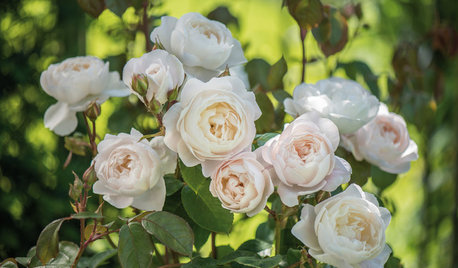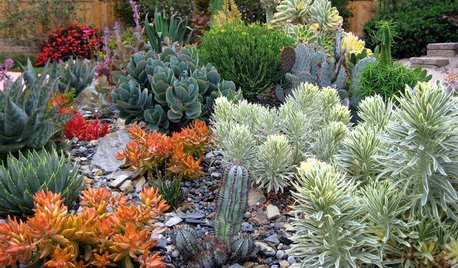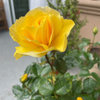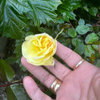Will Neem kill midge?
rochesterroseman
13 years ago
Featured Answer
Comments (33)
henry_kuska
13 years agolast modified: 9 years agojim1961 / Central Pennsylvania / Zone 6
13 years agolast modified: 9 years agoRelated Discussions
Will NEEM kill beneficial nematodes??
Comments (5)Beneficial nematodes require soil temperatures above 55F to be effective so waiting until almost the beginning of October to apply them is risky. You'll either need to take your chances with the Neem or wait until the soil warms sufficiently next spring before applying the nematodes. FWIW, resources indicate Neem (azadirachtin) biodegrades in the soil in a matter of a few weeks. JaG's comments regarding additives/surfactants would still apply....See MoreNeem oil killing fungus
Comments (2)This is the last pic of the progression. Less than three days later, this is a thoroughly dead fungus from what I can tell. Who says Neem oil does not kill fungus? I think I will keep using Neem oil for my fungus destruction needs. This was just a couple of light sprays over just a small section of a very badly infected bag of soil just once less than three days ago. As you can see, the fungus is still alive around the treated area and probably wondering if they are next. Muahaha! Have fun killing off those pesky fungus infections on your carnivorous plants....See Morewill neem oil kill beneficial insects
Comments (3)Terri, You should be OK. I checked the Koppert site (see the link below). The active ingredient in neem oil will kill less than 25% of the green lacewing larvae (which are much better to release than the green lacewing eggs, especially outdoors) ON CONTACT and persists for "zero" weeks. The Biobest site: http://207.5.71.37/biobest/en/neven/default.asp states that the active ingredient kills less than 25% of the ADULT green lacewings but doesn't mention the larvae. Neither provides information about lady beetles. I know of a few rare cases both in the scientific literature and in greenhouses (the only location in which I recommend releasing lady beetles due to their tendency to disperse) where there was some kill of adult lady beetles that received a direct application, but the residual wasn't a problem. Here is a link that might be useful: Koppert Side Effects...See Morewill neem oil kill cottony cusion scale?
Comments (10)The labels of a couple of different products containing Neem oil lists scale as one of the targets that they will control, so if what you used lists scale on the lable it probably will control them. The rubbing alcohol sprays may sometimes work, if the scale saturates the scales protective cover, but often those sprays do more harm to plants then the target insect....See Morehenry_kuska
13 years agolast modified: 9 years agojim1961 / Central Pennsylvania / Zone 6
13 years agolast modified: 9 years agohenry_kuska
13 years agolast modified: 9 years agohenry_kuska
13 years agolast modified: 9 years agojim1961 / Central Pennsylvania / Zone 6
13 years agolast modified: 9 years agodiane_nj 6b/7a
13 years agolast modified: 9 years agosusan4952
13 years agolast modified: 9 years agohenry_kuska
13 years agolast modified: 9 years agohenry_kuska
13 years agolast modified: 9 years agokarl_bapst_rosenut
13 years agolast modified: 9 years agohenry_kuska
13 years agolast modified: 9 years agobbinpa
13 years agolast modified: 9 years agolagomorphmom
13 years agolast modified: 9 years agohenry_kuska
13 years agolast modified: 9 years agobbinpa
13 years agolast modified: 9 years agoscottys
13 years agolast modified: 9 years agodiane_nj 6b/7a
13 years agolast modified: 9 years agojim1961 / Central Pennsylvania / Zone 6
13 years agolast modified: 9 years agoandrepap
13 years agolast modified: 9 years agorochesterroseman
13 years agolast modified: 9 years agobbinpa
13 years agolast modified: 9 years agohenry_kuska
13 years agolast modified: 9 years agobbinpa
13 years agolast modified: 9 years agopianoman
13 years agolast modified: 9 years agocarolinamary
13 years agolast modified: 9 years agojaxondel
13 years agolast modified: 9 years agohenry_kuska
13 years agolast modified: 9 years agotigrikt (Central NJ/6b)
13 years agolast modified: 9 years agorochesterroseman
13 years agolast modified: 9 years agohenry_kuska
13 years agolast modified: 9 years ago
Related Stories

EARTH DAYHow to Design a Garden for Native Bees
Create a garden that not only looks beautiful but also nurtures native bees — and helps other wildlife in the process
Full Story
GARDENING AND LANDSCAPINGBid Bad Garden Bugs Goodbye and Usher In the Good
Give ants their marching orders and send mosquitoes moseying, while creating a garden that draws pollinators and helpful eaters
Full Story
GARDENING GUIDESHow to Switch to an Organic Landscape Plan
Ditch the chemicals for a naturally beautiful lawn and garden, using living fertilizers and other nontoxic treatments
Full Story
GARDENING FOR BUTTERFLIESGardening for the Bees, and Why It’s a Good Thing
When you discover how hard bees work for our food supply, you may never garden without them in mind again
Full Story
SUMMER GARDENINGHow Are Your Roses Doing? A Complete Summer Guide
Follow these tips to keep your roses healthy and beautiful throughout the warm season
Full Story
GARDENING GUIDESHow to Keep Your Citrus Trees Well Fed and Healthy
Ripe for some citrus fertilizer know-how? This mini guide will help your lemon, orange and grapefruit trees flourish
Full Story
GARDENING AND LANDSCAPINGPorch Life: Banish the Bugs
Don't let insects be the bane of your sweet tea and swing time. These screening and product ideas will help keep bugs at bay on the porch
Full Story
WINTER GARDENINGPruning Secrets for Exquisite Roses
Encourage gorgeous blooms year after year with this time-tested advice on how to prune your rosebush in winter for health and shape
Full Story
GARDENING GUIDESA Beginner’s Guide to Growing Succulents
Their easy-care reputation is well-deserved, but a little TLC will turn succulents into star plants
Full Story
MOST POPULARHow to Start a Cool-Season Vegetable Garden
Late summer and late winter are good times to plan and plant cool-season crops like salad greens, spinach, beets, carrots and peas
Full StorySponsored
Central Ohio's Trusted Home Remodeler Specializing in Kitchens & Baths






rochesterrosemanOriginal Author